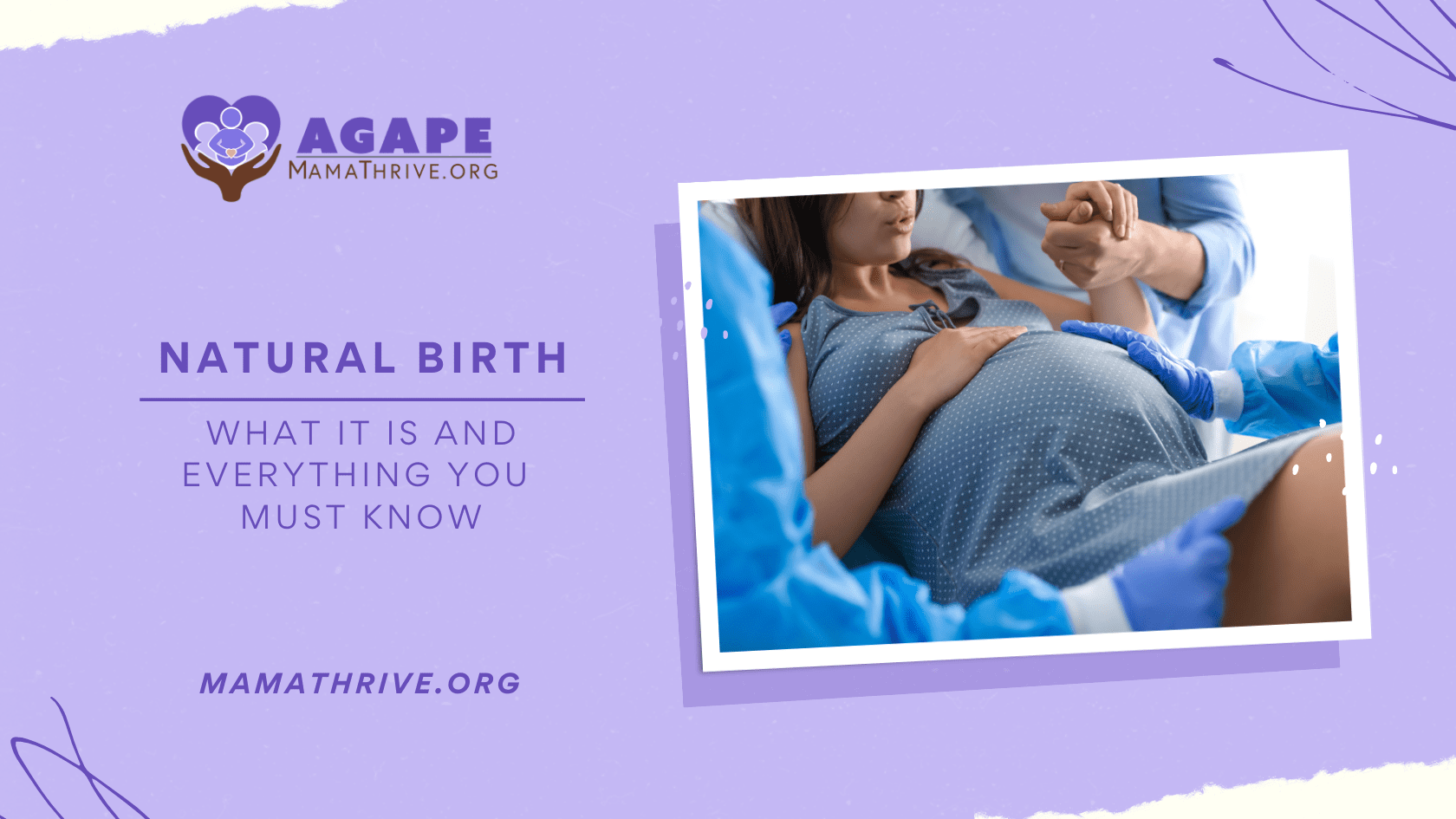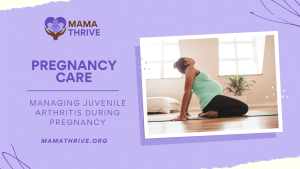Welcoming a new life into the world is a truly transformative experience, and for many expectant mothers, the idea of a natural birth resonates deeply. Natural birth, also known as unmedicated birth, allows women to embrace the physiological process of labor and delivery without medical interventions. In this blog, we will explore the process of natural birth and provide insights into what moms can expect along their journey.
Preparing for Natural Birth
Before embarking on a natural birth, it is essential to prepare yourself physically, mentally, and emotionally. Here are a few key aspects to consider:
- Education and Knowledge: Attend childbirth education classes to understand the stages of labor, coping techniques, breathing exercises, and relaxation methods. This knowledge will empower you to navigate the journey confidently.
- Building a Supportive Team: Surround yourself with a supportive birth team, including your partner, a doula, or a trusted friend or family member who can provide encouragement, guidance, and advocacy during labor.
- Physical Fitness and Well-being: Engage in regular exercise, practice prenatal yoga, and maintain a healthy lifestyle to support your body’s strength and endurance for the birthing process.

Stages of Natural Birth
The process of natural birth typically involves the following stages:
Early Labor
This is the initial stage of labor where contractions begin. During this phase, the cervix begins to efface (thin out) and dilate (open) to allow the baby to pass through the birth canal. Contractions may start irregularly and gradually increase in intensity and frequency.
Learn more about the signs of labor to better prepare.
Active Labor
In this stage, the cervix continues to dilate, usually from around 4 centimeters to 10 centimeters. Contractions become stronger, longer, and more regular. The mother may experience back pain, pressure, and intense sensations as the baby moves down the birth canal.
Transition
The transition phase marks the final stage of active labor, during which the cervix fully dilates to 10 centimeters. Contractions reach their peak intensity, occurring closer together. This stage is often characterized by increased pressure, a strong urge to push, and possible feelings of exhaustion or restlessness.
Pushing and Delivery
Once fully dilated, the mother enters the pushing stage. During this phase, she actively participates by using her abdominal muscles to push the baby through the birth canal. The mother may experience a stretching and burning sensation as the baby’s head crowns. With each contraction, guided pushing helps the baby move closer to birth.
Placental Delivery
After the baby is born, the placenta (afterbirth) needs to be delivered. The uterus continues to contract, causing the placenta to separate from the uterine wall. The healthcare provider will guide the mother through the process of delivering the placenta, usually through gentle uterine massage or controlled traction on the umbilical cord.
Read this comprehensive article to learn more about the stages of labor.
Throughout the natural birth process, the mother is encouraged to find positions that provide comfort and facilitate the progress of labor. This may include walking, changing positions, utilizing birthing aids such as birth balls or squat bars, or even utilizing water immersion in a birthing pool for pain relief.
It is important to note that while a natural birth typically involves minimal medical interventions, the presence of healthcare professionals is still crucial to ensure the well-being of both the mother and baby. They monitor the progress of labor, provide guidance and support, and intervene if complications or emergencies arise.
The decision to pursue a natural birth should be made based on individual preferences, overall health, and a thorough understanding of the potential risks and benefits. Attending childbirth education classes, creating a birth plan, and building a strong support system can all contribute to a positive natural birthing experience.
What to Expect about Natural Birth

Expectant moms who choose natural birth can anticipate several aspects during the process. While every birth experience is unique, here are some common expectations for moms planning a natural birth:
Intense Sensations
Natural birth involves experiencing the full range of sensations during labor. Contractions can be intense, with a gradual increase in frequency and intensity as labor progresses. Moms can expect waves of pressure and discomfort as the uterus works to facilitate the baby’s descent.
Coping Mechanisms
Moms will rely on various coping techniques to manage the intensity of labor pains. Breathing exercises, relaxation techniques, visualization, and finding comfort in different positions can help alleviate discomfort and enhance coping during contractions.
Active Participation
Unlike medicated births where pain may be masked, natural birth encourages moms to be actively involved in their birthing process. Moms will actively engage in finding positions, movement, and using gravity to aid the baby’s descent. This active participation allows moms to work with their bodies during labor.
Emotional Rollercoaster
Natural birth can elicit a wide range of emotions. Moms may feel a mix of excitement, anticipation, vulnerability, and empowerment throughout the labor process. Emotions can intensify as the baby’s arrival approaches, especially during the transition phase.
Supportive Environment
Creating a supportive birth environment is crucial during natural birth. Expectant moms should surround themselves with a care team, including a healthcare provider, doula, or supportive partner. These individuals can provide encouragement, physical support, and advocacy throughout the labor journey.
Natural Pain Relief Methods
Natural birth encourages the use of non-medical pain relief techniques. Moms can expect to utilize methods such as relaxation techniques, breathing exercises, massage, water therapy (e.g., birthing pools or showers), and the application of counterpressure for comfort during labor.
Freedom of Movement
One advantage of natural birth is the freedom to move and change positions during labor. Moms can walk, sway, squat, or utilize birthing aids such as birthing balls or rocking chairs to find comfort and promote the progression of labor.
Supportive Care Providers
Healthcare providers who support natural birth will aim to provide guidance, reassurance, and monitor the well-being of both mom and baby throughout the process. They will work in partnership with moms, ensuring their preferences and birth plan are respected, and intervening only if necessary for the safety of mom and baby.
Postpartum Recovery
Natural birth is often associated with a faster recovery compared to medicated births or cesarean sections. Moms may experience less medication-related grogginess or post-anesthesia side effects. They can expect to be more physically mobile and may be able to begin bonding, breastfeeding, and moving around sooner after delivery.
Learn more on how you can cope with postpartum depression.
It’s important to note that while these expectations are common, each birth experience is unique, and it’s essential for moms to communicate their desires and concerns with their healthcare provider to ensure a personalized birth plan that aligns with their goals and preferences.
To Sum Up…
Natural birth is a remarkable and empowering journey that allows women to embrace the strength and beauty of their bodies. By preparing physically, mentally, and emotionally, moms can approach the process with confidence. Understanding the stages of labor, employing coping techniques, and surrounding yourself with a supportive team will help you navigate the intensity of labor and create a positive birthing experience. Embrace the transformative power of natural birth and celebrate the incredible achievement of bringing new life into the world.





